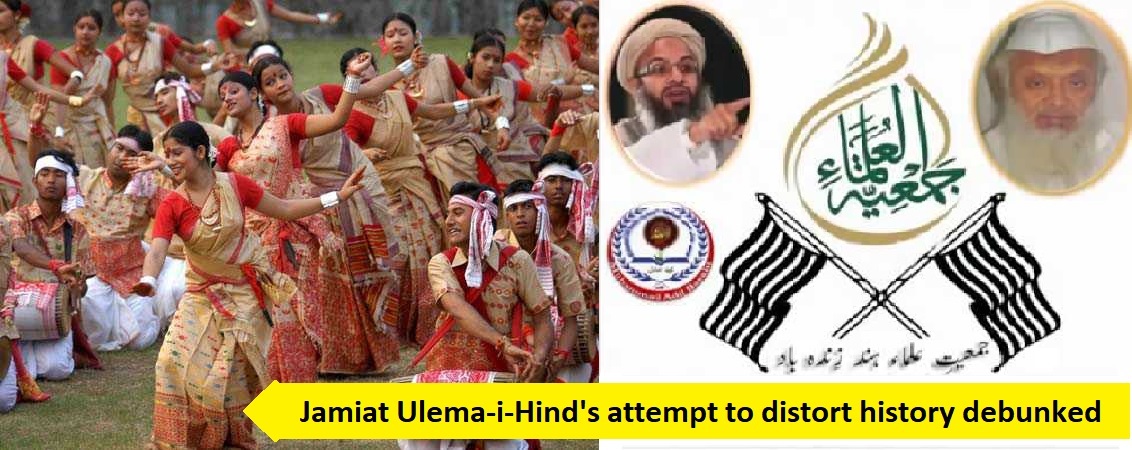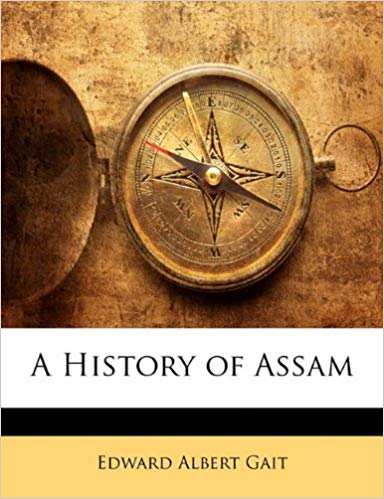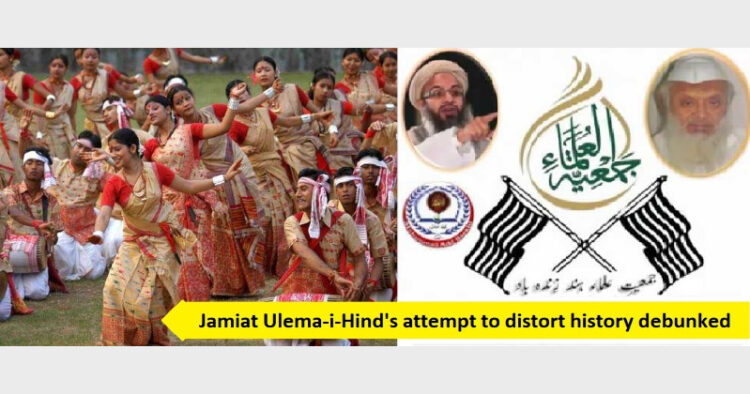– Dhruva Saikia

Did the Tibeto-Burman and Mongoloid arrival in Assam flush out the Dravidians, original inhabitants of Assam as the Jamiat Ulema I Hind claims in a memorandum submitted to the GoI appointed committee for implementation of Clause VI of the Assam Accord? The Jamiat Ulema I Hind further claims that the Muslim farmers who entered Assam during the British days ‘to augment cultivation of food crops’ there, are original inhabitants of the province who had been pushed out by the Tibeto-Burman and Mongoloid forces. The Jamiat ironically fails to mention the date and time of this Tibeto-Burman and Mongoloid fight with Dravidians in Assam, nonetheless they guess something like this happened even before the days of Mahabharata and Ramayana.
Assam Accord, as is well known, was signed way back in 1985 but its implementation faced serial hurdles, or lack of direction. The Clause 6 in the yet to be implemented accord deals with the issues related to indigenous populace, though, in any case, definitions of Assamese and Indigenous remain elusive. The Accord did provide for certain amenities for the Assamese, but is mum on the question as to who is an Assamese or an indigenous.
The BJP government, in New Delhi and Dipsur, has made an effort to accelerate the process of making the Clause 6 commitments a reality at the earliest and hence, taking all stakeholders into account, the Union home ministry in July 2019 reconstituted the high-level committee to implement Clause 6 of 1985 Assam Accord with a new chairman and increased the number of members from 9 to 12. The high level committee then launched the process of gathering feedback and suggestions from the public on the constitutional measures to be taken to protect the Assamese people.
Among those who have approached the high level Assam Accord Clause 6 implementation committee with their suggestions and aspirations, the Jamiat Ulema I Hind has forwarded such an account on the definition of Assamese as well as criteria for identifying the indigenous people of Assam, that has been described by others as ‘baseless and outrageous.’ The Jamiat draws its clue about the definition of Assamese and indigenous Assam people from a book written by former Assam Minister and lawyer Abdul Muhib Mazumdar.
Mazumdar had published a book Down the Memory Lane and he was the man behind the contentious Illegal Migrants Determination by Tribunal Act, passed during the Congress CM Hiteswar Saikia’s regime that had betrayed the gamut of existing judicial procedure for identifying the illegal migrants. The present Chief Minister of Assam Sarbananda Sonowal fought against the Act in the Supreme Court and his gallant victory in the legal battle against the deceitful Act earned him the title of National Hero, conferred by Assam’s civil society.
Abdul Muhib Mazumdar had conceptualized the IMDT Act in order to delay the judicial proceedings against alleged illegal migrants. The Act earned both the then CM of Assam Hiteswar Saikia and his aide Abdul Muhib Mazumdar unrelenting public fume. While the IMDT Act was perceived as a protection for illegal Bangladeshi migrants, Hiteswar Saikia a politician and CM loyal to those illegal migrants, Prafulla Kumar Mahanta and his party AGP was looked upon as the champion of cause of Assamese and the indigenous.
Politics has got its own tricks and magic that boasts of some mysterious power to render the common people and onlookers dumbfound. The legal expert for Bangladeshi migrants, who had designed the IMDT Act under Hiteswar Saikia’s clout, one fine day decided to change his side and this IMDT craftsman was ironically greeted to the AGP side of the fence by none other than Prafulla Kumar Mahanta, the man who had led years-long Assam agitation before winding it up with Assam Accord and marching to the Janata Bhavan.
This much for the introduction to the lawyer, politician and author Abdul Muhib Mzumdar. Now let us have a look at what the Jamitat Ulema I Hind says and how do the Assamese Muslims and historians react.
Well, Abdul Muhib Mazumdar in his book said that ‘that the immigrants from the region known as Bangladesh today have Dravidian ancestry and were once residents of the land which is known as Assam today. They were driven out of their land during Mongolian and Tibeto-Burman aggression. But during the colonial period, the British rulers initiated their migration back to Assam to grow more food in the region and therefore they are the original inhabitants of the land. The book annexed along with the memorandum says that the Assamese identity was formed by multiple migrant ethnicities and hence they are migrants.’
After this theory, first propounded Abdul Muhib Majumdar in his book, rrecently, Jamiat Ulema has annexed the part of the book with the theory, as a reference along with a copy of memorandum submitted to the high-level committee formed by the Government of India for implementation of Clause 6 of the Assam Accord, says Kangkan Acharyya in his October 25 report in First Post.
He further mentions in his report – ‘Interestingly the theory annexed in the memorandum does not fix any date to its claim that Tibeto-Burman and Mongolian aggression pushed out Dravidians in Assam. But it claims that the phenomenon took prior to the ages of Ramayana and Mahabharata.
‘Though it is a historical fact that mass-scale migration from present-day Bangladesh took place during the colonial period, there is no historical evidence to assert that the same group of people have any ancestry in Assam. No wonder that the historians have rejected the theory outright.

Sir Edward Albert Gait, a British Civil servant who served in Assam during the colonial period and authored one of the authoritative research works named History of Assam mentioned in his book, “Whether the first Mongolian settlers found Dravidians already established in Assam or not is a question that cannot now be unravelled. Logan thought there was a Dravidian basis to various Bodo and Naga dialects, and, if this were so, the answer might be given in the affirmative. But Dr. Grierson does not support his view.”
Rajen Saikia, a historian and author of a number of research works on Assam history said, “This theory has absolutely no academic value. We have never heard of such things. Historical theories cannot be a figment of imagination. Every theory has to be based on evidence. There is no such evidence to make such an assertion that there was a Dravidian habitat in Assam which was pushed out. Hence I do not think that the theory merits any academic discussion at all.”
The First Post report also mentions that several Assamese Muslim organizations have dismissed the Jamiat stand as baseless and outrageous.













Comments